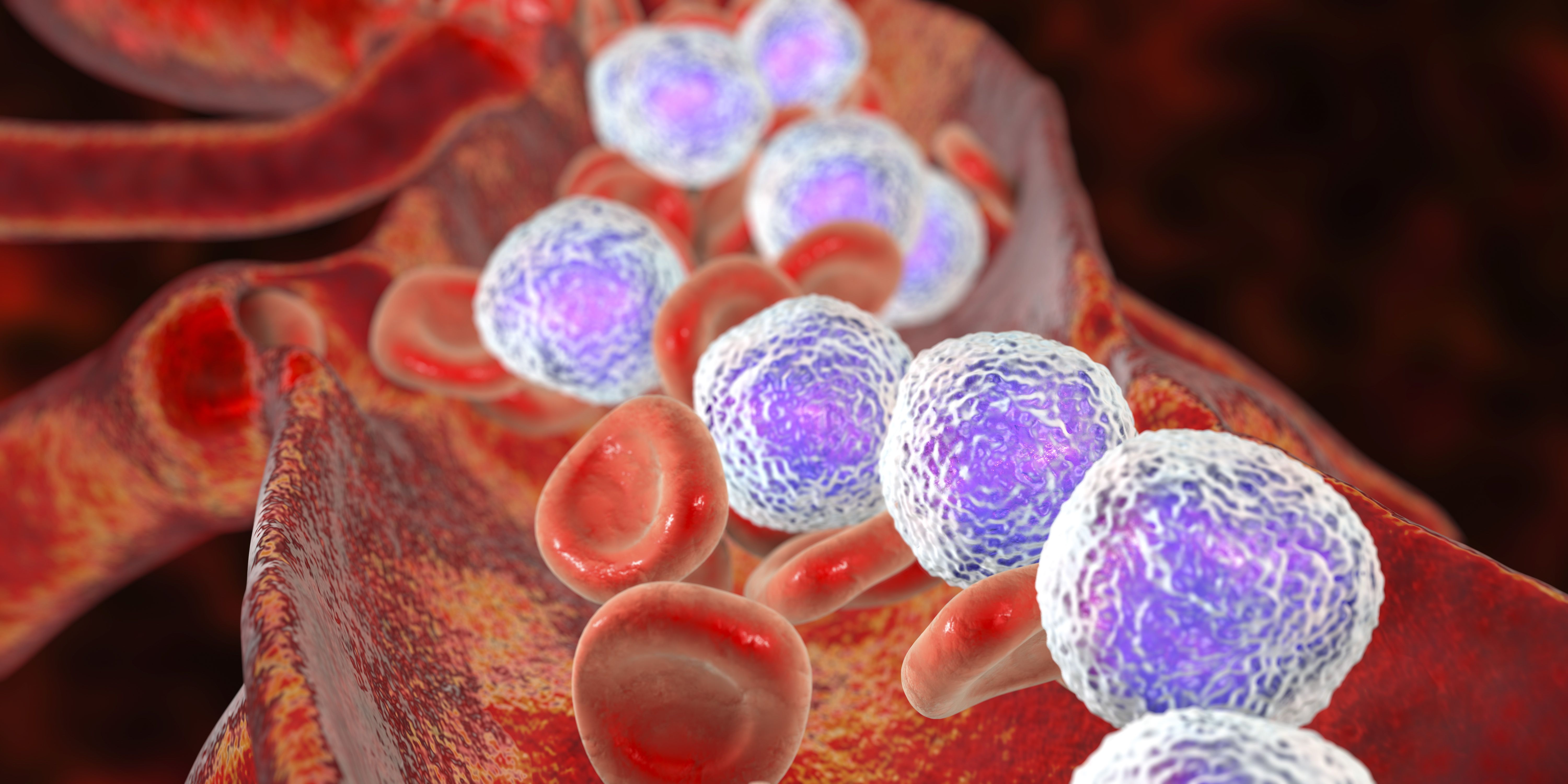Low-Molecular Weight Heparin Shows No VTE Reduction in Newly Diagnosed ALL
Investigators evaluated the impact of low-molecular weight heparin after the first 60 days of treatment as well as treatment overall.
“[LMWH] may even be disadvantageous in the older patients above 40 years without [pegaspargase] in the first induction cycle. This calls for a need for future and possibly randomized trials on VTE prevention in ALL," according to Mandy N. Lauw, MD, PhD.

Patients with newly diagnosed acute lymphoblastic leukemia (ALL) who were treated with low-molecular weight heparin (LMWH) via an intermediate-dose regimen did not experience a reduction in venous thromboembolism (VTE) compared with those who did not receive thromboprophylaxis, according to findings from a sub-study of the HOVON-100 trial (NTR2004).1 The data were presented at the 2024 European Hematology Association (EHA) Congress.
Results showed that after the first 60 days of treatment, thrombosis occurred in 17% (n = 44) of patients who received LMWH compared with 11% of patients who did not receive thromboprophylaxis (n = 13; adjusted subdistribution hazard ratio [SHR], 1.52; 95% CI, 0.79-2.90). The SHR was split per age group and was 0.88 for patients aged between 18 and 40 years (95% CI, 0.37-2.08) vs 2.47 (95% CI, 0.92-6.63) in those between 41 years and 70 years.
In patients with and without LMWH, the thrombosis events were comprised of deep vein thrombosis (9% vs 0%, respectively), pulmonary embolism (7% vs 8%), cerebral vein thrombosis (25% vs 38%), arm vein plus central venous catheter–related thrombosis (52% vs 31%), arterial thrombosis (2% vs 0%), and other events (5% vs 23%).
“We still saw a cumulative incidence of 15% VTE after the first 60 days of ALL treatment, and overall, during the entire follow-up, it was 29.8%,” lead study author Mandy N. Lauw, MD, PhD, of the Department of Hematology at Erasmus University Medical Center (MC), Erasmus MC Cancer Institute in Rotterdam, The Netherlands, said in an oral presentation of the data. “[LMWH] may even be disadvantageous in the older patients above 40 years without [pegaspargase] in the first induction cycle. This calls for a need for future and possibly randomized trials on VTE prevention in ALL.”
The treatment of patients with ALL has evolved in recent years due to the addition of pediatric-inspired regimens, Lauw explained. However, she noted that the improvement in survival outcomes also came with an increase in cardiac toxicities, specifically symptomatic VTE occurring between 10% and 40% of pediatric and adult patients. This adverse effect not only causes morbidity, but speaks to an unmet need for therapeutic anticoagulation, she added.
“It also has an impact on ALL treatments and survival rates,” Lauw said.
Furthermore, she explained there are prothrombotic changes in a patient with ALL upon their diagnosis, which decreases after initiation of treatment, and the impact of L-asparaginase on the coagulation system could in fact be contributing to the VTE complications. There is no consensus on whether LMWH reduces the risk of VTE, but prior data demonstrated that pediatric patients have lessened VTE without major bleeding.International Society on Thrombosis and Haemostasis Scientific and Standardization Committees guidance recommends LMWH high-prophylactic dose plus antithrombin if antithrombinlevels are less than 0.5 to 0.6 U/ml.2
To determine whether a similar effect was seen in adult patients, investigators conducted a prospective side-study of the HOVON-100 trial, which comprised adult patients with newly diagnosed ALL aged between 18 and 70 years. Patients were randomly assigned 1:1 to receive clofarabine plus induction therapy or induction therapy alone. Thromboprophylaxis was administered with LMWH using a fixed intermediate dose of nadroparin at 5700 anti-Xa international units subcutaneously once daily. There was also a recommendation of no measurement or supplementation of antithrombin/fibrinogen.
The trial amendment started in January 2012. Of 369 patients, investigators used a per-protocol analysis for patients who received LMWH (n = 253) and those who did not (n = 116) for the sub-study.
The primary end point was first venous or arterial thrombosis during the first 60 days of treatment for ALL. Secondary end points were major bleeding, all venous or arterial thrombosis during treatment or HOVON-100 follow-up overall, and event-free survival.
Regarding baseline characteristics, 40% of patients were female, the median age was 42 years (range, 26-55), and 51% of patients were older than 40 years. Most patients had B-cell ALL (73%), and 20% of patients had a BCR-ABL mutation in t(9;22). Sixty-three percent of patients were classified as having poor-risk disease. Five percent of patients had prior thrombosis that was venous (3%) or arterial (2%).
Additional data showed that during the HOVON-100 trial treatment overall, which included a median follow-up of 87 months, 33% of patients who had LMWH had a thrombosis event compared with 22% of those who did not have thromboprophylaxis (adjusted SHR, 1.59; 95% CI, 1.02-2.48). When split by age, the SHR difference was not pronounced; SHR was 1.59 (95% CI, 0.81-3.11) in those between 18 and 40 years and 1.60 (95% CI, 0.89-2.87) in patients between 41 years and 70 years.
The thrombosis events were comprised of deep vein thrombosis (11% of LMWH-treated patients vs 8% of those without), pulmonary embolism (10% vs 15%, respectively), cerebral vein thrombosis (17% vs 19%), arm vein plus central venous catheter–related thrombosis (54% vs 35%), arterial thrombosis (5% vs 4%), and other events (5% vs 19%).
Editor’s Note: Lauw noted that the research was supported by grants from ZonMw and GlaxoSmithKline.
References
- Lauw M, Rijneveld A, Ko A, et al. Low-molecular-weight heparin does not prevent venous thromboembolism in adults with newly diagnosed acute lymphoblastic leukemia; prospective side-study of the HOVON-100 trial. Presented at: 2024 European Hematology Association Congress; June 13-16, 2024; Munich, Germany. Abstract S325.
- Zwicker JI, Wang T-F, DeAngelo DJ, et al. The prevention and management of asparaginase-related venous thromboembolism in adults: guidance from the SSC on Hemostasis and Malignancy of the ISTH. J Thromb Haemost. 2020;18(2):278-284. doi:10.1111/jth.14671.